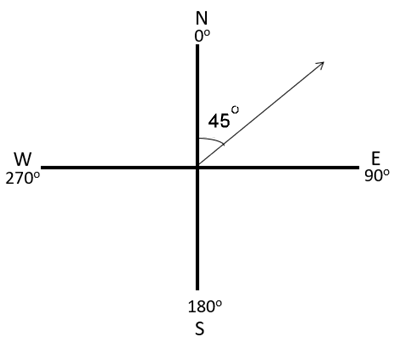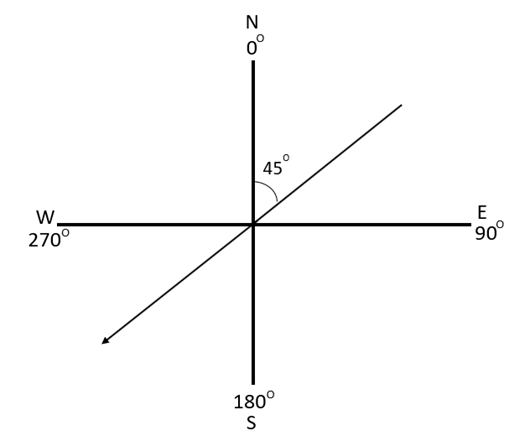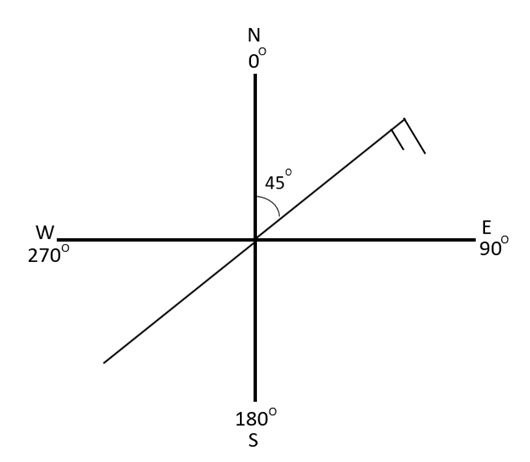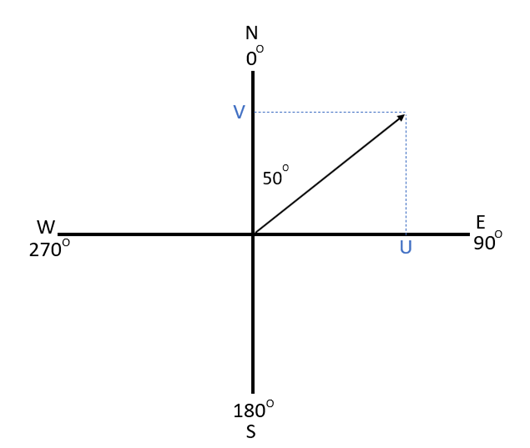Vector field symbols are used to display flow, such as magnitude or speed, and direction. Some vector field data is stored with magnitude and direction, where the magnitude is the measurement of flow and the direction is the angle of the flow. Another way to store vector field data is using U-V (speed and direction) components.
If your data is oceanographic, you can keep the default Single Arrow symbol, but it is recommended that you use one of the Ocean Current symbols.
If your data is meteorological, you should display your data using wind symbols, such as Wind Barb or Beaufort Wind.
Rendering the symbol
If the data is in the form of magnitude and direction, magnitude and direction will be used directly in symbol drawing. By default, the angle is based on a geographic reference system where due north is 0, and the angle is measured clockwise, and the arrow points to the direction of mass movement. The angle measurements within meteorology and oceanography are represented differently.
Oceanographic arrows are often used when depicting the flow of ocean currents. To measure the angle of flow, you start at due north, which is 0 degrees. Then move clockwise until you reach the destination angle, which is the angle at which the flow is moving toward. In the image below, the oceanographic angle destination is 45 degrees.

Meteorological arrows are used when displaying the flow of wind. Wind direction is measured by the origin angle from where the wind originates. In this case, a wind direction of 45 degrees comes from the northeast, and the arrow points in the opposite direction. To measure this angle of flow, start at due north, which is 0 degrees. Then move clockwise until you reach the direction from which the wind originates. In the image below, the meteorologic angle originates at 45 degrees.

When the wind barb symbol is specified for a 45-degree angle, the symbol uses the same angle method as the wind direction, but uses the wind barb symbols, such as the illustration below.

U-V components
For data that is defined by U and V components, the U and V components will be converted to magnitude and direction, where the angular reference is based on geography, in which due north is 0.
If U-V components are used to calculate oceanographic flow, the U and V components show the magnitude and destination of the flow. In this case, the ocean current angle would be 50 degrees.

In the case where U-V components are used for wind flow, the arrow points to the mass flowing direction, but is measured using the meteorological convention. In this case, the wind angle would be 230 degrees.
